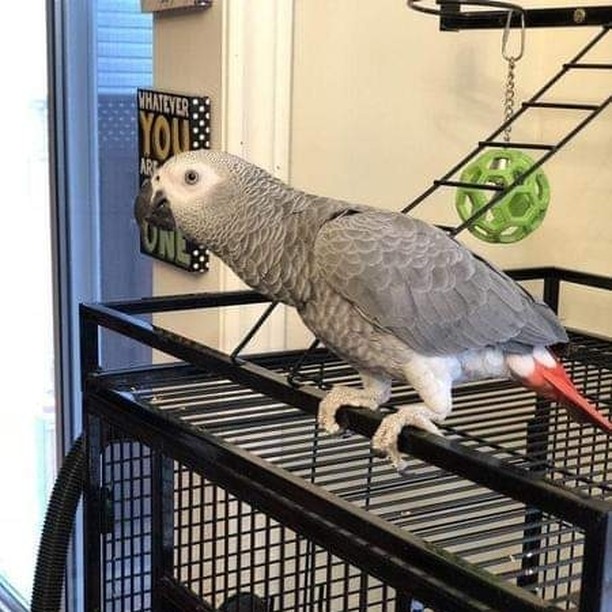The African Grey Parrot (Psittacus erithacus) is known for its remarkable intelligence and striking appearance, making it one of the most adored pet birds globally. However, the well-being of these avian companions hinges significantly on replicating their natural environment in captivity. Understanding the African Grey’s natural habitat can provide valuable insights into how best to care for charmingafricangreyparrotforsale them.
Natural Habitat of the African Grey Parrot
The African Grey is native to the rainforests and woodlands of Central and West Africa, residing predominantly in countries such as the Democratic Republic of the Congo, Cameroon, and Ghana. These parrots thrive in environments that offer sufficient cover and an abundance of food resources. The main characteristics of their natural habitat include:
| Habitat Feature | Description |
|---|---|
| Climate | Humid, tropical with temperatures averaging from 20°C to 30°C (68°F to 86°F) |
| Flora | Dense forests, including primary and secondary growth—particularly favoring fruit trees as feeding sites |
| Altitude | Typically found at elevations ranging from sea level up to 1,800 meters (about 5,900 feet) |
| Social Structure | Often found in flocks, ranging from a few individuals to more than 30 birds |
These environmental factors play a crucial role in the African Grey's lifestyle, feeding habits, social interactions, and overall health.
Replicating the African Grey’s Environment in Captivity
Creating an environment that mirrors the African Grey’s natural habitat is essential for its health and psychological wellbeing. This includes considerations related to space, diet, social stimulation, and environmental enrichment.
1. Enclosure and Aviary
- Space Requirements: A spacious cage is vital. The minimum size for a single African Grey should be 24" x 24" x 36". Larger aviaries allow for increased mobility and exercise.
- Material: Cages should be constructed of bird-safe materials, with no sharp edges to ensure safety.
- Design: Vertical space should be emphasized, as these birds enjoy climbing. Perches of various diameters and textures mimicking natural branches can provide exercise and foot health.
2. Diet
African Greys are primarily fruit and seed eaters. In captivity, their diet should be as diverse and balanced as possible to reflect their natural feeding habits. A suitable diet plan includes:
- Pelleted Diet: High-quality commercial pellets should form the base of their diet, ensuring adequate nutrition.
- Fresh Fruits and Vegetables: Offer a variety of fresh produce such as apples, carrots, leafy greens, and bananas.
- Seeds and Nuts: These should be provided in moderation as treats due to their high-fat content.
3. Social Interaction
In the wild, African Greys are social animals that thrive in flocks. To replicate their social needs:
- Companionship: Ideally, African Greys should have the company of another bird, or they should receive regular, interactive time with their human caregivers.
- Mental Stimulation: Engage the bird with toys, puzzles, and activities that challenge their intellect.
- Vocalization: Encourage natural vocal behavior by conversing with the bird regularly, allowing them to practice their incredible mimicry skills.
4. Enrichment and Play
Mental stimulation is just as critical as physical health. Providing enrichment can mimic natural behaviors, keeping an African Grey mentally stimulated:
- Toys: Offer a variety of toys made from safe materials, including chewable wood, ropes, and foraging toys.
- Exploration: Allow supervised free-roaming outside of the cage in a safe environment.
- Bathing: Provide opportunities for bathing to maintain feather condition and promote happiness.
The Significance of a Proper Environment
Maintaining a suitable environment is crucial for the health and longevity of African Grey parrots. A well-structured habitat can help prevent behavioral issues such as feather plucking and excessive vocalization, which are often signs of stress or boredom.

FAQs
What is the lifespan of an African Grey Parrot?
African Greys can live up to 50-65 years or more with proper care, making them a long-term commitment.
How often should I interact with my African Grey?
Daily interaction is essential; at least 2 hours of quality time outside the cage each day is recommended.
Can African Greys live alone?
While they can live alone, it is better for their mental health to have another bird or plenty of human interaction.
What is the best diet for African Grey Parrots?
A balanced diet includes pelleted food, fresh fruits and vegetables, modest servings of seeds and nuts, and regular access to clean water.
Do African Greys need sunlight?
Yes, exposure to natural light is important for their health. If natural light isn't available, providing a UV light source is beneficial.
Caring for an African Grey Parrot entails creating an environment that closely mimics their natural habitat. Understanding their needs concerning space, diet, social interaction, and mental stimulation can significantly enhance their quality of life. By replicating the conditions that keep these remarkable birds healthy, caregivers can enjoy a fulfilling and lasting companionship that mirrors the deep, emotional connections that African Greys have with their wild counterparts.







